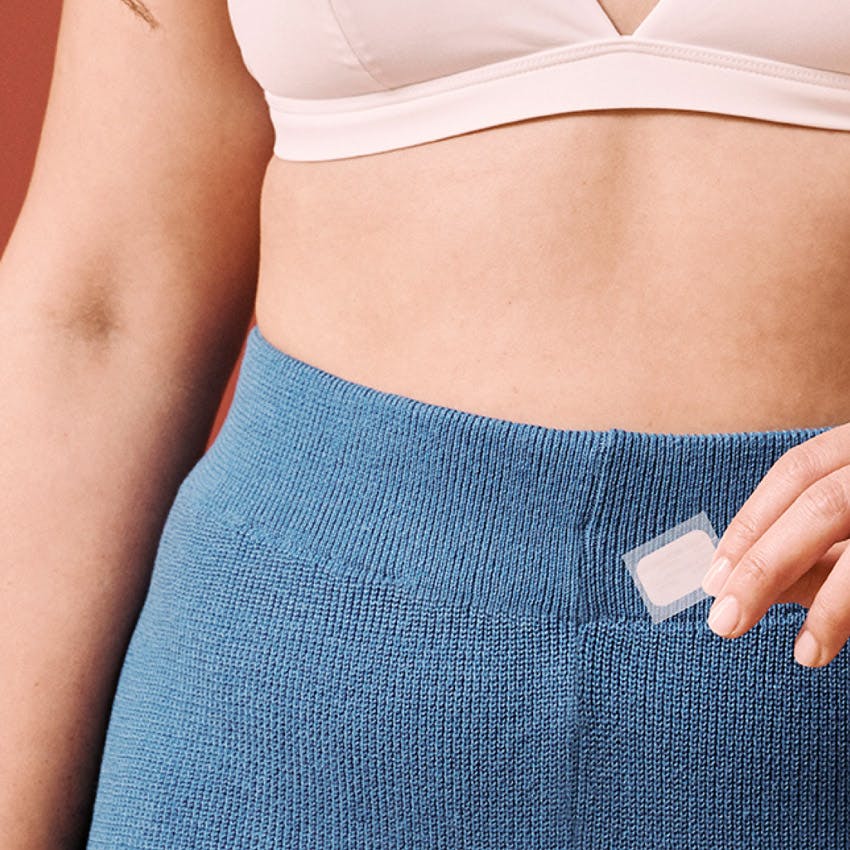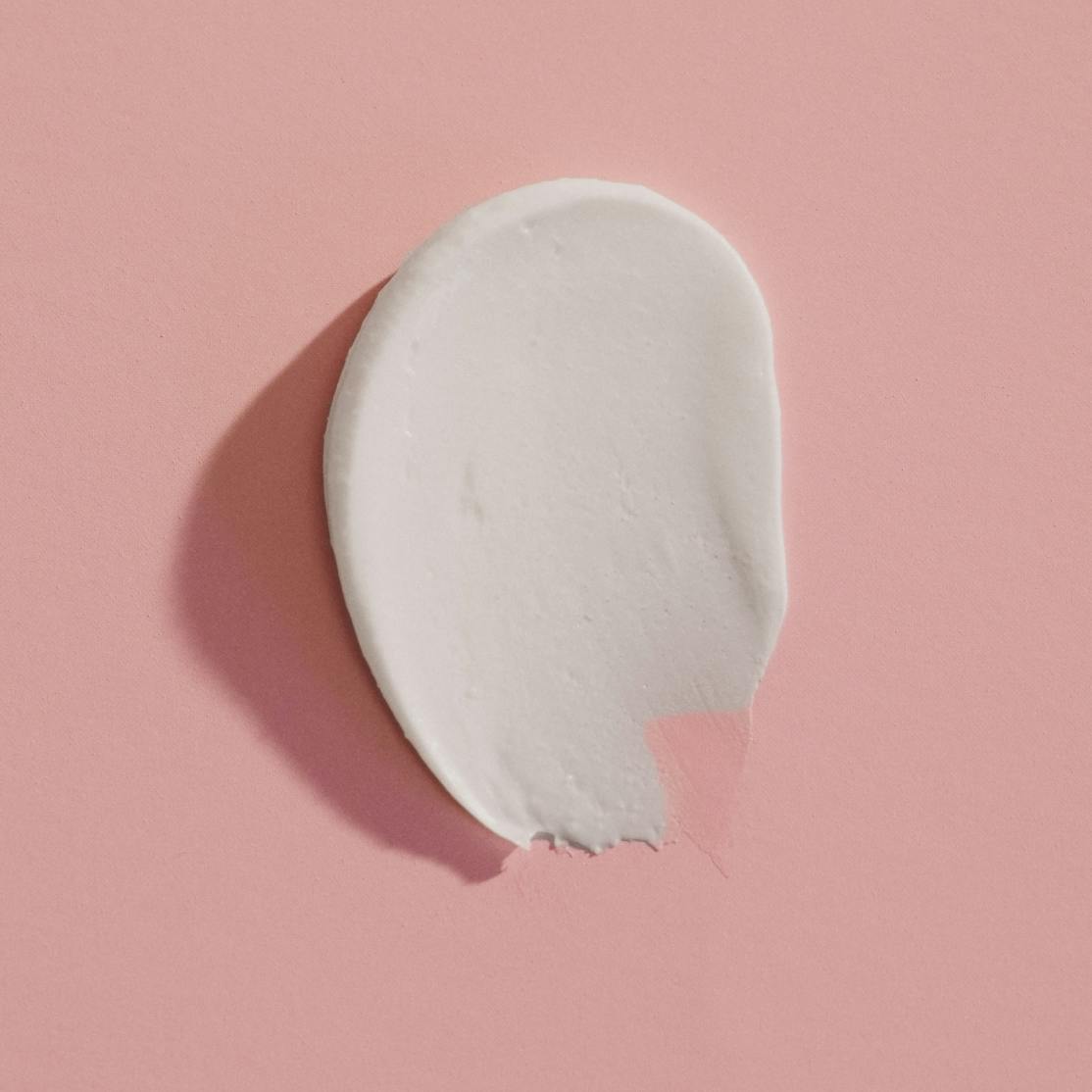When considering estrogen replacement options for menopause, it’s important to understand the differences between estrogen creams, patches, gels, and sprays. These transdermal treatments provide consistent hormone delivery, helping to alleviate symptoms like hot flashes, brain fog, and vaginal dryness. Work with your clinician to find the best option for your symptoms and medical history, whether you need systemic or localized relief.
When it comes to your health, there are choices everywhere—from the type of exercise you add to your routine, to the foods you try to eat regularly. Choosing how to tackle your menopause symptoms using hormones is no different, but all too often, women don’t even realize they have options for treatment.
“Typically when women get started with hormone therapy, they leave their doctor’s visit with a prescription, after having zero—zero—discussion of the difference between all the options,” says says Lauren Streicher, MD, a clinical professor of obstetrics and gynecology at Northwestern University’s Feinberg School of Medicine and the founding medical director of the Northwestern Medicine Center for Sexual Medicine and Menopause.
To decide what’s right for you and feel confident in your choices, bare bones advice just isn’t enough. Your clinician should be knowledgeable, taking into consideration your symptoms, your lifestyle, and your personal approach to health. To get that conversation off on the right foot, it’s important to arm yourself with reliable information about the various forms and formulations of estrogen available. Read on to understand the differences between estrogen creams and estrogen patches, as well as gels and sprays.
What is Hormone Replacement Therapy (HRT)?
Hormone replacement therapy, sometimes referred to as menopausal hormone therapy or MHT, is a treatment used during perimenopause and menopause to replenish hormones, namely estrogen and progesterone, that naturally decline as your reproductive years wind down. The name is a bit misleading—you’re not replacing the hormones in your body as much as you’re supplementing them as they decline. HRT is the most effective treatment for managing menopause symptoms that result from rapid changes in estrogen and progesterone.
Those changes can lead to a dizzying array of symptoms. That’s no surprise when you consider that we have estrogen receptors all over our bodies, so it's not just wonky periods or breast changes we’re contending with. There are estrogen receptors in our brains and bones as well as our skin and hair. That’s what can make estrogen withdrawal so frustrating: As levels fall, we’re met with a confounding array of symptoms that deserve our attention.
HRT has a lot going for it: It’s the most effective treatment for relieving menopausal hot flashes, night sweats, vaginal dryness, and recurrent urinary tract infections, according to the most recent guidelines from The Menopause Society. Clinically, hormone replacement therapy has also been shown to be highly effective in relieving symptoms of insomnia, mood changes, and brain fog as an added benefit. A large body of recent research shows that if women start hormone replacement therapy within 10 years of their last period, not only do they enjoy significant relief from menopausal symptoms but they also have a lower risk of heart disease and bone loss. HRT may also be connected to decreased risk of diabetes and weight gain.
There are many different types of HRT treatment but they can be divided into two main categories: systemic or non-systemic.
Examples of systemic HRT include estrogen in the form of:
- Pills
- Patches
- Pellets, which Midi doesn’t recommend
- Topical gels and sprays
These products all get into your bloodstream, and circulate to various organs and tissues.
If you’re taking HRT your clinician will likely add progesterone or progestin to estrogen to protect the uterus. This is necessary because while estrogen is effective in alleviating symptoms, it can also thicken the uterine lining (which is called endometrial hyperplasia), increasing the risk of uterine cancer. Adding progesterone to HRT for any patient with a uterus is key because it controls thickening and sends the risk for developing uterine cancer back to baseline. For those without a uterus—due to having had a hysterectomy—certain forms of progesterone may still be recommended to help improve symptoms like sleep issues and night sweats.
Non-systemic treatments include vaginal creams, rings, or suppositories which are applied directly to or inside the vagina, and work locally to address vaginal symptoms. They do not get into the bloodstream.
Whether you’re using patches, creams, gels, or sprays as your HRT, some women may experience side effects including:
- skin irritation
- breast tenderness
- headaches
- vaginal discharge
- nausea
- back pain

Your HRT Questions, Answered
Got questions about HRT? Watch Midi's "AMA (Ask Me Anything) about HRT, Estrogen, Testosterone, Progesterone" webinar that's full info on what you need to know.
All About Estrogen Patches
All estrogen patches patches, sometimes called estradiol patches or HRT patches, are thin, adhesive patches applied to the skin. They can contain only estrogen (estradiol) or a mix of estrogen and progestin (norethindrone). They adhere to your skin and slowly release estradiol directly into your bloodstream. HRT patches are one of the most commonly prescribed first-line therapies for many women beginning HRT for menopause because they may have milder side effects than you might experience with other delivery methods, like estrogen pills.

Estrogen patches are a form of transdermal (which literally means “through the skin”) hormone therapy—the patch is placed on the lower abdomen or upper buttock area, and delivers hormones through the skin and into the bloodstream at a consistent level.
Transdermal estrogens get absorbed through the skin when applied to your thigh or arm and then are released directly into the bloodstream. They are not metabolized by the liver.
Curious how obvious a patch might look? They come in either round or square shapes, and they can range from about the size of a dime to much larger and more visible. But many are nearly transparent and very discreet.
The 3 Types of Estrogen Patches
There are three different types of estrogen patches:
- Reservoir patches—the oldest form of patch—hold the estrogen inside a small membrane that controls its release.
- Matrix patches contain suspended estrogen that’s in direct contact with your skin, but the adhesive is only on the perimeter of the patch.
- Dot Matrix patches combine the adhesive and the estrogen. They’re the smallest and thinnest estrogen patches, and the newest technology available.
Benefits of Estrogen Patches
- Lower disease risk than pills: As mentioned above, one of the main advantages of estrogen patches over oral HRT is that they bypass the gastrointestinal tract. Oral medications must pass through the digestive system and liver before entering the bloodstream, which can lead to fluctuations in hormone levels and increased risk of liver-related side effects, like gallbladder disease. Transdermal patches deliver hormones directly into the bloodstream, providing more stable hormone levels and reducing the strain on the liver. One study found that transdermal hormone therapy is associated with a lower risk for gallbladder disease than hormone therapy pills.
- Fewer side effects: All forms of HRT (and any prescription medication for that matter) come with side effects, but one of the benefits of using estrogen patches (and its direct-to-bloodstream delivery method) is the ability to use lower doses of estrogen while still achieving symptom relief. Patches are able to be prescribed at lower doses because estrogen is better absorbed in the process so a higher percentage ends up in your bloodstream than with pills, which have to be broken down and digested. The steady, controlled release of estrogen through the skin minimizes fluctuations in hormone levels, which can reduce the risk of side effects such as bloating, breast tenderness, and mood swings. Lower doses also decrease the risk of more serious complications including high blood pressure and stroke.
- Easy dosing options: Patches are available in various dosages, allowing for individualized treatment plans that can be adjusted as needed to find the optimal dose for symptom relief. And you can wean off them quickly if you’re having side effects.
- Reduced clotting risk: Compared to oral HRT pills, patches are less likely to lead to blood clots. “Oral drugs increase the risk of blood clots much more so than patches,” says Dr. Goldman. As a result, they’re often the first choice for women with cardiovascular risk factors, such as deep vein thrombosis (DVT) and a history of hypercholesterolemia, hypertension, or diabetes. Patches are also a good option if you start HRT after 60 to avoid the same risk factors that increase with age. One study that followed 54,000 women, ages 35 and older, found that those who used estrogen patches were 30 percent less likely to develop blood clots in their legs or lungs since the drug delivery bypasses the liver.”
- Improved libido: Estrogen is the main hormone responsible for maintaining vaginal blood flow and lubrication, and keeping your vaginal walls elastic. It’s also directly linked to sex drive. When estrogen levels drop, tissue in both the vagina and the vulva becomes thinner, dryer, weaker, and prone to irritation. HRT patches can help: One study found that women on the patch reported a greater improvement in sexual function compared to women on HRT pills.
- Better bone health: One of the significant benefits of estrogen therapy, including estrogen patches, is the reduction in the risk of postmenopausal osteoporosis. Osteoporosis is a condition characterized by weakened bones, making them more susceptible to fractures. Estrogen plays a crucial role in maintaining bone density, and its decline during menopause can lead to bone loss. By providing a steady supply of estrogen, patches help maintain bone density and reduce the likelihood of osteoporosis-related fractures. Another perk of patches: There are low-dose HRT patches that are prescribed specifically for treatment of osteoporosis.
- Potential Alzheimer’s protection: Recent research suggests that HRT patches can improve brain function. One report, based on findings from the Kronos Early Estrogen Prevention Study (KEEPS), found that women who used the estrogen patch maintained the most brain volume in the parts of the brain responsible for memory and reasoning compared to placebo.
- Convenience: Estrogen patches are an appealing set-it-and-forget option for many busy women. Unlike oral medications, which need to be taken daily, most estrogen patches are applied once or twice a week, depending on the product. This reduces the likelihood of missed doses.
How to Use Estrogen Patches
HRT patches come in a variety of doses and are usually applied once or twice a week, depending on your treatment plan.
Estrogen patches are applied to a clean (no powder or lotion), hair-free area of either your lower abdomen or to the upper buttocks. Once you’ve chosen an area of the body to use for your patch—either the lower abdomen or the butt—stick with that area for consistent absorption. When it’s time to replace your estrogen patch, simply pull it off and apply a new patch to a clean and dry, neighboring area of the skin (but give the exact area you just used a break of a week or so before applying there again). HRT patches come in a variety of doses, and you and your clinician may need to trial different levels to find the right one for you.
Things To Know About Wearing an Estrogen Patch
- They can irritate the skin. The adhesive on some estrogen patches can cause a skin reaction in some wearers. Smaller versions like the matrix and dot matrix patches have less adhesive, which can help if your skin is particularly sensitive. You can also use a little bit of over-the-counter 1% hydrocortisone cream before applying a patch, waiting for it to dry completely before layering the patch over it. If that does not help the irritation, book a follow-up visit to discuss other forms of HRT with your clinician.
- The adhesive can be hard to remove. “One of the biggest complaints I hear about patches is that they look dirty after about three days, and the adhesive can get stuck on your skin,” says Dr. Streicher. If your estrogen patch leaves residue, gently remove it off using baby oil and a cotton ball, or try Uni-Solve Adhesive Remover.
- They might be more expensive. Generic patches are available, but if you want one of the smaller or more discreet versions, your insurance might not cover them.
- They can come loose. While your patch should stay put through exercise, showering, or swimming laps, they might not hold up if you frequent hot tubs or take really hot showers. Don’t worry too much if your patch gets dislodged. Try to re-stick it to your skin, but if it doesn’t adhere, fold it in half and toss it. Just apply a new patch and move on with your normal prescription schedule.
All About Estrogen Gels and Sprays
Gels and sprays are another form of transdermal, systemic estrogen, meaning that the product gets into your bloodstream and then travels to the organs and tissues it needs to get to. There are certain considerations to keep in mind if you choose gels or sprays.
- You have to plan ahead. Estrogen gels and sprays need to dry completely—which usually only takes about five minutes—before you can get dressed. Research has shown that they may absorb differently if you layer on sunscreen or moisturizer too quickly, so you’ll need to find a time that works for you. You also can’t get the area wet for 30 minutes to an hour after applying.
- They may be more expensive, and less likely to be covered by insurance, than estrogen patches. While several generic versions of patches exist, the gels and sprays have fewer generic options on the market.
- They can transfer beyond your body to others. With estrogen gels and sprays, there’s a risk of the estrogen transferring to someone who touches you before the product is fully absorbed. For example, some research on the spray has found that young children who came into contact with a caregiver who used it showed nipple swelling, so it’s really important to wait for it to fully dry, or wear long sleeves if you’re around children and animals.
All About Estrogen Creams
Estrogen cream is a non-systemic form of hormone therapy that works locally inside the vagina and around the vulva. Vaginal estrogen helps improve a range of symptoms—vaginal discomfort during sex, dryness, urinary symptoms, even recurrent UTIs—by restoring the tissue in the genital area. Some women feel embarrassed to talk about vaginal dryness, it’s one of those topics we should talk about, because more than half of all women experience it during the years leading up to and following menopause. In fact, a study of 1,000 postmenopausal women and their male partners found that 64 percent of women experienced pain during sex and 30 percent of couples cited vaginal discomfort as a main reason for stopping intercourse.
This is largely due to vaginal atrophy—which is increasingly being called Genitourinary Syndrome of Menopause, or GSM—defined as the thinning, drying and inflammation of the vaginal walls that may occur when your body has less estrogen. The term GSM encompasses not just vaginal issues, but vexing urinary problems that may occur. Needing to pee frequently, experiencing bladder leakage, and getting recurrent UTIs can be a maddening problem for women in menopause, yet it’s generally undertreated. “Women can be suffering for years with these issues,” says Midi Clinician Ashley Winter, MD, and “the treatments available can be life-changing. These are real evidenced-based therapies—in this case, a low-dose, topical vaginal estrogen that is safe and you can take it in perimenopause, in menopause, or even start it after menopause.”
Prescription vaginal estrogen cream is considered the most effective option for relieving vaginal dryness and irritation and has been shown to eliminate symptoms of vaginal atrophy in 80 to 90 percent of cases. For some women, using vaginal creams in tandem with other forms of HRT—i.e. patches or pills—is helpful in addressing symptoms that may not be fully resolved with a systemic product alone.
Unlike over the counter vaginal moisturizers and lubricants, which temporarily ease irritation, vaginal estrogen gets to the root of the problem by directly supplying parched vaginal tissues with estrogen to improve blood flow and lubrication which can be a boost to your libido or pleasure during intercourse. Alternate methods to deliver estrogen vaginally include a suppository or ring placed high up in the vagina. Typically, estrogen creams are inserted into the vagina several times per week via an applicator. Vaginal rings can stay in place for up to three months.
Vaginal estrogen is safe and effective for most women. Compared to HRT, vaginal estrogen delivers a smaller amount of estrogen straight to the source, so it has no systemic (or body-wide) effects that could potentially raise risks for women with a history of certain cancers. In fact, a recent study found that use of vaginal estrogen for vaginal dryness, urinary problems, and decreased libido is safe among gynecological cancer survivors. According to the American Academy of Obstetricians & Gynecologists, women with a history of estrogen-dependent breast cancer who are unresponsive to non-hormonal treatments may consider certain formulations of topical estrogen.
Estrogen Pills Overview
Oral estrogen is a method of systemic HRT that works for many women, especially those who do not like the transdermal methods or who can’t get insurance coverage for one of those methods. Estrogen taken orally travels through the stomach, into the intestines, and then gets metabolized by the liver. That trip through the liver is what results in risk factors that are unique to oral estrogen, as well as the fact that oral estrogen requires higher doses to be effective because they must go through the process of digestion. (More on oral estrogen below.)
Taking estrogen pills can improve or even eliminate hot flashes, help you sleep, aid with brain fog and mood changes, and decrease the insulin resistance and visceral organ fat that can contribute to the meno belly.
Oral estrogen products do have certain risks, however. According to Dr. Streicher, these include:
- An increase in gallstones
- An increase in inflammatory markers associated with heart disease
- An increase in triglyceride levels, which in turn increases the risk of blood clots including stroke, pulmonary embolism, and deep vein thrombosis (DVT)
“Don’t let these side effects scare you off, if taking a daily pill is your preferred way to get estrogen,” emphasizes Dr. Streicher. “Most low-risk women do just fine taking pills.”
The risk of developing a blood clot when taking estrogen postmenopausal is really small—and much smaller than if someone is taking birth control pills, which most women don’t hesitate to do in their fertile years.” Your clinician will talk with you about your risk factors and if oral pills are right for you. Midi clinicians do a thorough assessment of your history and risk factors to determine the safety of oral HRT in terms of blood clot risk. If you’re at higher risk for them, you may be counseled to try other forms of HRT.
The Takeaway
If you are dealing with troublesome symptoms of perimenopause and menopause, there are solutions—in many forms!
- Estrogen patches, gels, sprays, and creams are all proven ways to combat menopausal symptoms, and many patients say the improvements they feel are truly life-changing.
- For menopause symptoms like hot flashes, insomnia, and mood changes, systemic methods like patches, gels or sprays may be the better choice for women who are able to take them; for tackling the vaginal discomfort and urinary problems, creams are probably the way to go, and they have an exceptional safety profile.
- In some cases, you will want to combine the therapies.
- Talk to a healthcare professional, like a Midi clinician, about your symptoms and preferences, and discuss your options for estrogen patches, gels, sprays or creams or any other hormone therapy.
If you’re in perimenopause or menopause and want guidance from clinicians who specialize in women’s midlife health, book a virtual visit with Midi today.
Hormonal change is at the root of dozens of symptoms women experience in the years before and after their period stops.
Our trained menopause specialists can help you connect the dots to guide you towards safe, effective solutions.
Whether you need personalized guidance or a prescription routine to tackle symptoms—including migraines, brain fog, hot flashes, mood swings, and weight gain—we’ve got you covered.
Midi’s mission is to revolutionize healthcare for women at midlife, wherever they live and whatever their health story. We believe that starts with education, to help all of us understand our always-changing bodies and health needs. Our core values guide everything we do, including standards that ensure the quality and trustworthiness of our content and editorial processes. We’re committed to providing information that is up-to-date, accurate, and relies on evidence-based research and peer-reviewed journals. For more details on our editorial process, see here.


 Marissa Fontanez, DNP, FNP, FAIHM, MSCP
Marissa Fontanez, DNP, FNP, FAIHM, MSCP



